johndiver999
Contributor
I am not going to argue back and forth, but I have a relatively new SS1 from atomic. It breathes FINE at 130 feet. I remember seeing world record deep divers using Air 2's quite a while ago. I was surprised because I had not used one at that time and had read similar stories about bad performance and he indicated that they tested them at 300 feet on air and they worked fine. That was good enough for me!I think these are probably OK for shallow water diving when there is a direct ascent to the surface with no required decompression stops. These things do not breathe well and are sometimes like sucking molasses through a straw.
But, once again if the OOA diver has to breathe it for only a short time to make a direct ascent, sort of like a CESA then I guess these things are OK.
I quickly Googled and saw a price of $319.00 for an AIR 2. Seems pricey when compared to a Dive Rite second stage for $150.00.
Another benefit to the recreational diver is that one of the most common scuba failures, is a stuck inflator. Meaning it begins to inflate automatically. Obviously this could result in an unintended and rapid ascent that could be bad. Often it is quite difficult to uncouple the fitting from a standard inflator. The air 2's have a much larger and easier to operate coupling that can be quickly disconnected underwater in an emergency. Of course people will say this is some terrible problem because you now lost your back up regulator- so you simply end the dive if you don't have a pony or are convinced that your buddy could not do actual buddy breathing to save their life.
Another benefit, as mentioned is that the air 2 is constantly used (to inflate and possibly to deflate the BC), the diver knows where it is and in an emergency he should be able to access it immediately. For many people, their skills and set up are poor and the standard octopus is dragging in the mud, floating around, tucked into some stupid place etc. All of which make accessing the octopus in a real emergency a potential problem for people who are sloppy and unskilled.
I would not argue that they are the absolute best solution for recreational divers, because it is not that big of a deal if you practice using your gear and keep it maintained. Sometimes I use a BC with a standard inflator and don't have an octopus and it makes me a tab bit nervous when I have a buddy. For solo, it is not that big of a deal for me, but when I have a buddy, I like the flexibility of having the pony bottle reg, the air 2 and the primary second stage. I often keep a standard inflator hose on my reg and an Air 2 hose so I can have the flexibility to use either if I feel like it.
For back mounted pony bottle divers, I think it makes a lot of sense in that particular application, but if someone wants to use three second stages have at it, but the potential for confusion is bad.
Yesterday I was diving with a solo diver and for his third tank he screwed up and brought air instead of nitrox. He never dives with an octopus OR a pony bottle when solo, even past recreational depths, which I think is dumb, but a lot of old school divers I go with, just don't worry about ever needing redundancy.
So, in order to extend his dive (since he did not have more nitrox on board) , he decided to back mount a pony with 80%, with a back mount on his BC so he could go into deco and clear it quicker without making me wait too long for my dive.
He has a gazillion dives and has been doing it for decades. I'm driving and set him up for the drop and I ask him if he is ready and he says "yeah" and then a second later says "oops". I look over and he is removing the 80% regulator from his mouth and replacing it with the air second stage! That simple stupid error yesterday could have easily killed him!
Of course, proper tech divers would always run the deco bottle as a stage bottle that they can not confuse with back gas, but it was just one more very dramatic and recent example of how easy it is to mix up second stages. If using an AIr 2 significantly reduces that problem for back mounted pony bottles, then I think they are a good choice for that application in particular (in other words, serving the purpose of eliminating three second stages coming from your back).
Saying you won't dive with someone who has an AIR2 seems pretty silly to me, but I don't buddy up with that many people anyway.




